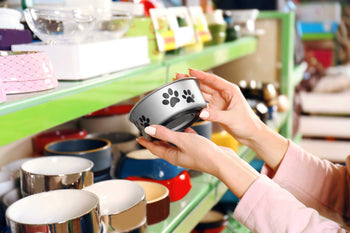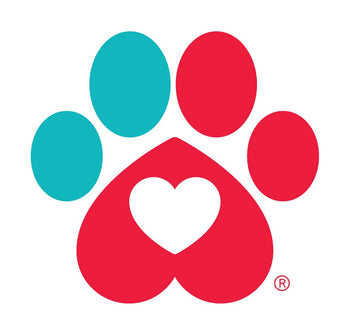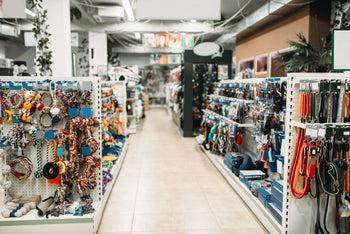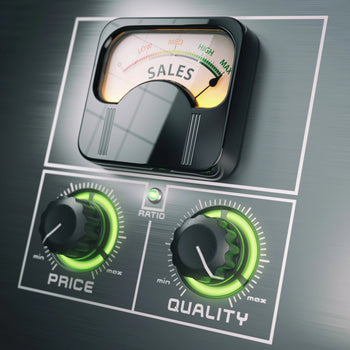- In:
- Operations,
- Sales,
- Success,
- Trends
How to Become a Successful Pet Store
"When building your inventory, also look for brands, products, and services that might not be on the shelves of big box stores."
The pet industry is well established and diverse, filled with shops for every dog mom and dad to find what they need.
Your store can easily be one of the leading sellers in pet products, but if business isn’t your forte, and all you’ve really considered is how much you love pets (the most important piece), here are a few ways to help you get on track to becoming Top Dog.
Establish a distinct niche. What’s a niche? Niche is a fancy French derived word meaning a small, specialized population. “People who own pets” is a large group, finding your niche will narrow this down so you can cater to those that are in your area, share the same passions, and will help keep your inventory manageable. Here are some ideas for what your niche could be:
- Organic pet consumable products
- Sustainable (washable/reusable) pet products
- Pet accessories
- Products specifically for extra large (or extra small) breeds
When building your inventory, also look for brands, products, and services that might not be on the shelves of big box stores. Once word is out that your store is environmentally friendly and not “as seen on tv”, pet parents will be more likely to come to your shop for their pet family needs.
Assess the performance of your business. Business is all about data. The more you collect, the more you’ll know, and not only will you be able to make the best decisions on improving your store, you’ll have the numbers to back them up. How often you collect and asses is up to you, it can be weekly, monthly, quarterly, or yearly. But remember this data isn’t just about sales and dollars, it’s about customer engagement and brand awareness too.
To assess how well your business is performing, you can:
Google yourself.
It may feel a little double-o-seven to gather intel on yourself, but this is a great way to track engagement and see what people are saying. Who’s ranting? Who’s raving? How many people are talking about you? There are countless tools out there that you can use to find out what searches bring up your store, how often you’re looked up, and what keywords are driving traffic to you. Consider buying in to the magic of internet data to know for sure that Becky really did tell all her friends about your store, like she said she would.
Identify your goals.
So maybe, at this point in your store’s life, it’s not so important what Becky thinks. Take notes on what is so you have something to evaluate. Setting goals not only identifies what you want from your store but also gives you the tools to check and see if you’re crushing them or need a little more fine tuning. Here are a few examples of what a goal could be:
- Increasing market share by x%
- Improve customer retention rates (keep track of repeat customers and why they came back for more)
- Increase sales of product x by y% (if you don’t meet this goal, it would be a good indicator that it may be time to carry something else)
A good set of goals will lead you to a great set of performance indicators. Whether you’re relying on financial statements, sales results, or customer surveys, performance indicators will show your strengths and weaknesses so you’ll be able to move ahead with improvements (remember the ultimate goal is for your store to be Top Dog).
Improve product displays. Be sure that the best-selling items are the easiest to find in your store and that they occupy prime shelf space. This prime space is allocated to a particular product to express how important it is to be sold in your pet store. So, even if that bedazzled pink collar is your favorite product, if the fur-blending brown is top choice among customers, give it the prime time space.
Establish your brand. When starting a business, it’s extremely essential to launch a brand. Creating a brand is a marketing practice of creating a name, a symbol or a design. It is important because a brand will identify you and differentiate you from other businesses.
One of the first things you can do is to come up with a catchy business name so people can easily remember it and to use that sort of ‘branding’ in all of your marketing and communicating. It’s usually always rewarding to put a lot of thought process into your brand and to make a name and ‘voice’ for your company that people will remember and fall in love with.
Other ways to help establish brand:
Explore keywords.
Listing the possible keywords you want to incorporate in your brand will help you find inspiration in coming up with a catchy name.
Be creative.
To achieve a name that will easily be remembered, you can add some wordplay. It’s a witty literary technique wherein words are manipulated with the intention to amuse. Examples: Melon Cauli (a fruit and vegetable store), Sensibill (receipt management software).
Make it change-proof.
You would want a brand name that will be able to adapt to plans you will make in the future. Let’s say you’re a pet store that sells dog food and dog treats but in the future, you decide to also offer pet toiletries, make sure your name isn’t something like “Good Eats!” and the first thing your customers see is a product dedicated to your pet and number 2.
Keep it simple.
Remember to keep a name that’s understandable, easy to say and spell or type. You wouldn’t want your customers to be guessing the correct spelling of your brand name and type misspelled URLs.
Do not copy.
Make sure your brand name is absolutely available and no other company uses the name you’ve come up with. There are a lot of domain availability checkers on the internet. You can also check your local registry if there are any brands registered that have the same name as yours.
Upgrade your store's website. Customers can be on a hectic schedule and they might not have the time to drop by your store and get updated with what’s new or to purchase products they need. Upgrading your website is a good way to inform your customers and enable users to order products on the go.
Getting a lease. What good is a pet store without a store? One advantage to the soft market (where the pet industry belongs) is that there’s been a steady decline in business leasing. The soft market is a type of market that has more potential sellers than buyers and is often known as the buyer’s market. So, it’s now much easier to get a lease at a pet store. You may even prefer to acquire your location or you may also think about buying an existing store.
There are many factors to consider when looking for the right spot to lease/buy.
Location.
This is the main factor. Location is very important for your customers to easily locate you. You wouldn’t want to be opening up your pet store in the less visited part of town. A location that can easily be seen and accessed is very appealing to customers.
Space.
Having a clear understanding of the space you will rent/buy will give you the idea if the price is fair enough. Also take into consideration potential renovations of the hallways, entrances, and bathrooms.
Clean Title.
Make sure the property is cleared from any compliance with the law and that it complies to local regulations.
Becoming a successful pet store is dog-gone hard work. It requires a lot of patience and strategies to get to your goals. But if your four legged friends come out happier and healthier in the end, it will all be worth it.

"Upgrading your website is a good way to inform your customers and enable users to order products on the go."











